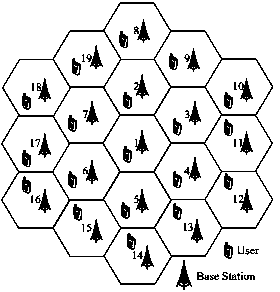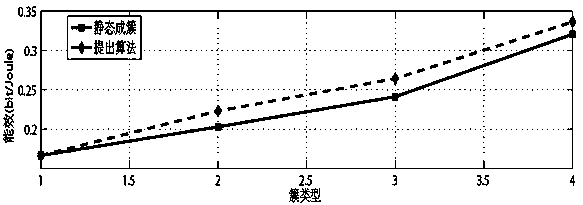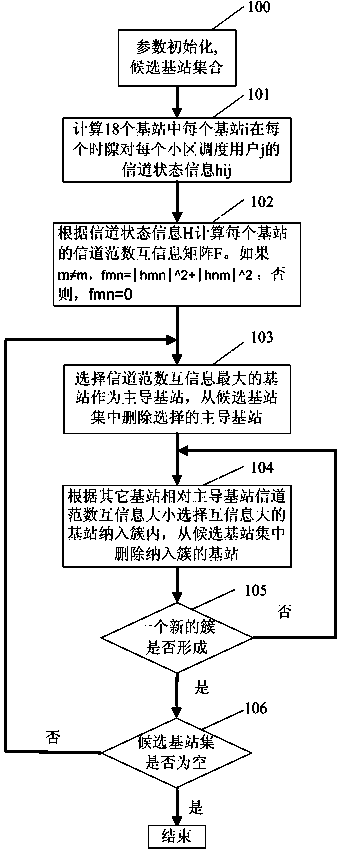Dynamic clustering method for multi-base-station cooperation
A technology of multiple base stations and base stations, applied in the field of dynamic clustering, can solve the problem of high complexity, and achieve the effects of reducing feedback overhead, reducing computational complexity, and improving system energy efficiency
- Summary
- Abstract
- Description
- Claims
- Application Information
AI Technical Summary
Problems solved by technology
Method used
Image
Examples
Embodiment Construction
[0025] In order to facilitate the understanding of the technical content of the present invention, specific embodiments are given together with the attached drawings for description as follows. The main purpose of this embodiment is to provide a low-complexity dynamic clustering method for multi-base station cooperation, so that the system can quickly cluster base stations with low complexity according to changes in user channel state information, so as to improve the system performance. efficiency.
[0026] Such as figure 1 As shown, consider a cellular system with two circles and 19 cells in total. For the convenience of clustering, one cell on the side is removed, and only 18 cells are considered. The radius of the cell is 500 meters, the base station and the user are both single-antenna, and each base station is located in the center of the cell. Users are evenly distributed in each cell, and in each scheduling time slot, each cell polls and schedules a user for service....
PUM
 Login to View More
Login to View More Abstract
Description
Claims
Application Information
 Login to View More
Login to View More - R&D
- Intellectual Property
- Life Sciences
- Materials
- Tech Scout
- Unparalleled Data Quality
- Higher Quality Content
- 60% Fewer Hallucinations
Browse by: Latest US Patents, China's latest patents, Technical Efficacy Thesaurus, Application Domain, Technology Topic, Popular Technical Reports.
© 2025 PatSnap. All rights reserved.Legal|Privacy policy|Modern Slavery Act Transparency Statement|Sitemap|About US| Contact US: help@patsnap.com



